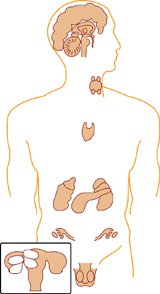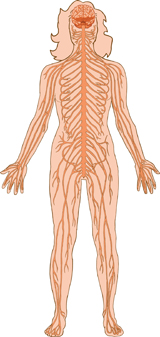Module 2
1. Module 2
1.42. Page 2
Module 2—The Endocrine System
 Explore
Explore
Regulating the Internal Environment
You and your friends are at a rock concert. Coloured lights are flashing, and the music is loud. You are dancing with your friends and having a great time. You see the changing lights, you hear and feel the music, and you sense the temperature of the room. Heart rate, breathing rate, body temperature, and sweating are all increased.
Your body is able to detect and respond to environmental change and is able to regulate your internal environment by the two control systems you have studied in this unit—the nervous and endocrine systems. Although they are structurally different in many ways, the two systems must constantly interact to control physiological processes such as heart rate.
 Read
Read
Read pages 436 to 437 in your textbook to explore how the nervous and endocrine systems are different.


© Oguz Aral/shutterstock
 Self-Check
Self-Check
SC 1. To summarize the differences between the nervous and endocrine systems, complete a table like the following that contrasts the two systems with respect to method of communication, speed of communication, duration of response, target pathway, and what action is brought about by the effectors. Check your answers and file your work in your course folder.
Feature To Be Contrasted |
Nervous System |
Endocrine System |
Method of Communication |
|
|
Speed |
|
|
Duration |
|
|
Target Pathway |
|
|
Action |
|
|
 Self-Check Answers
Self-Check Answers
SC 1. Your table should resemble the one below.
Feature To Be Contrasted |
Nervous System |
Endocrine System |
Method of Communication |
neural pathways or electrochemical impulse transmission |
hormones in bloodstream |
Speed |
very rapid (milliseconds) |
relatively slow (minutes/hours/days) |
Duration |
short-term effects |
longer-lasting effects |
Target Pathway |
specific through nerves to glands or muscles |
hormones to a broad range of target cells |
Action |
causes glands to secrete or muscles to contract |
causes changes in metabolic activity |